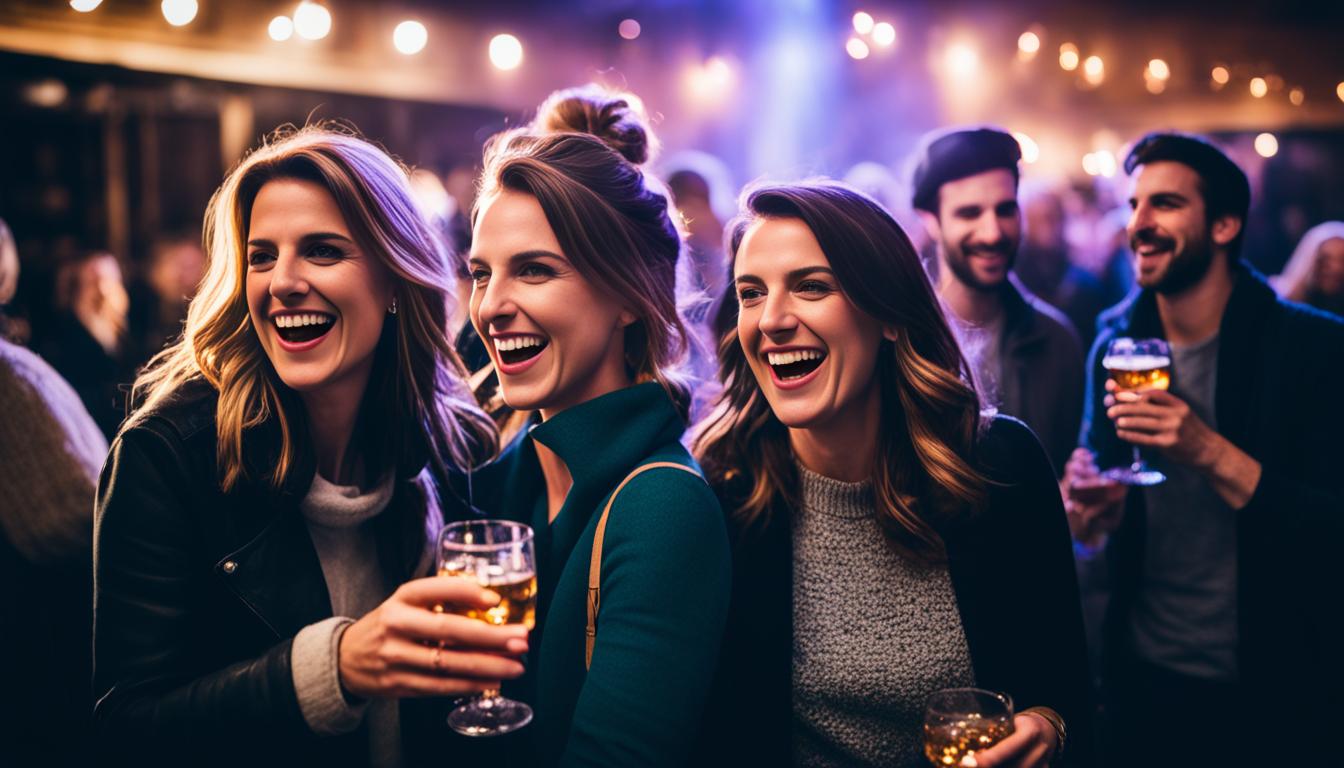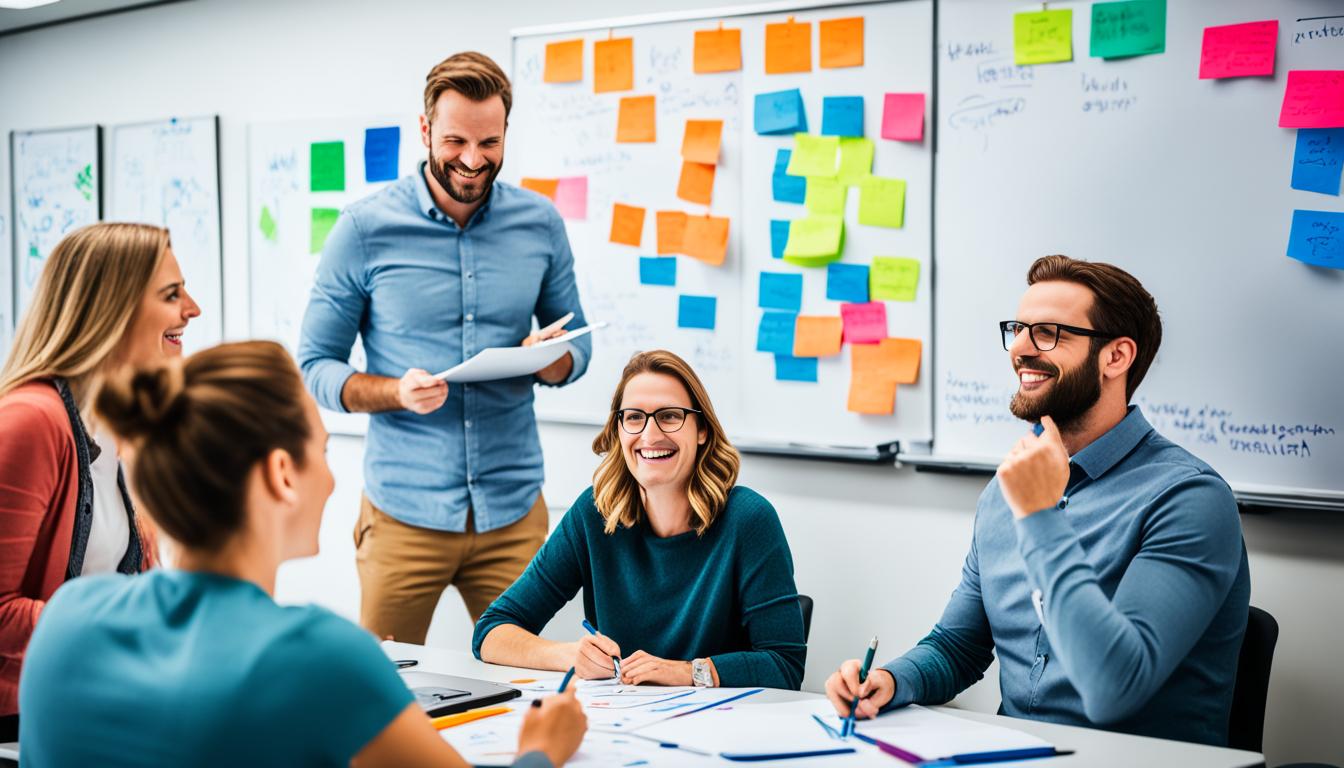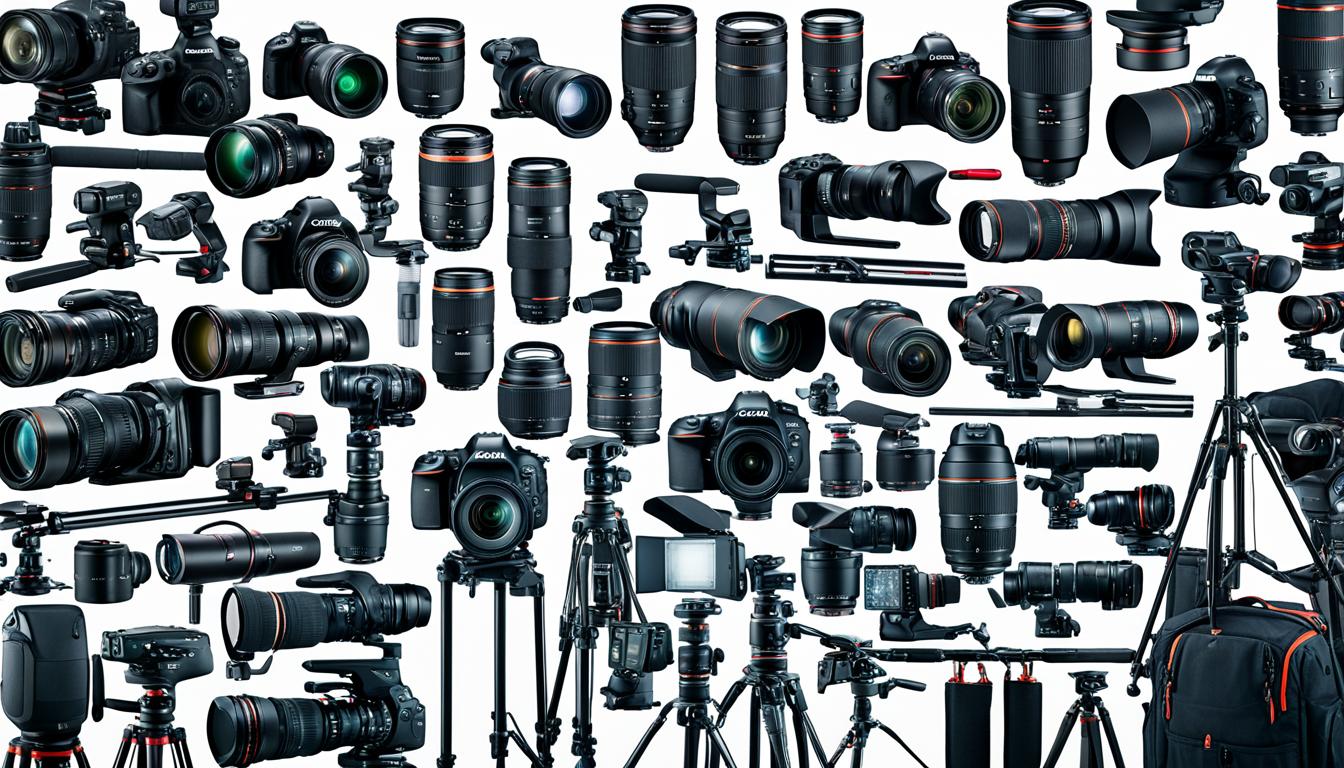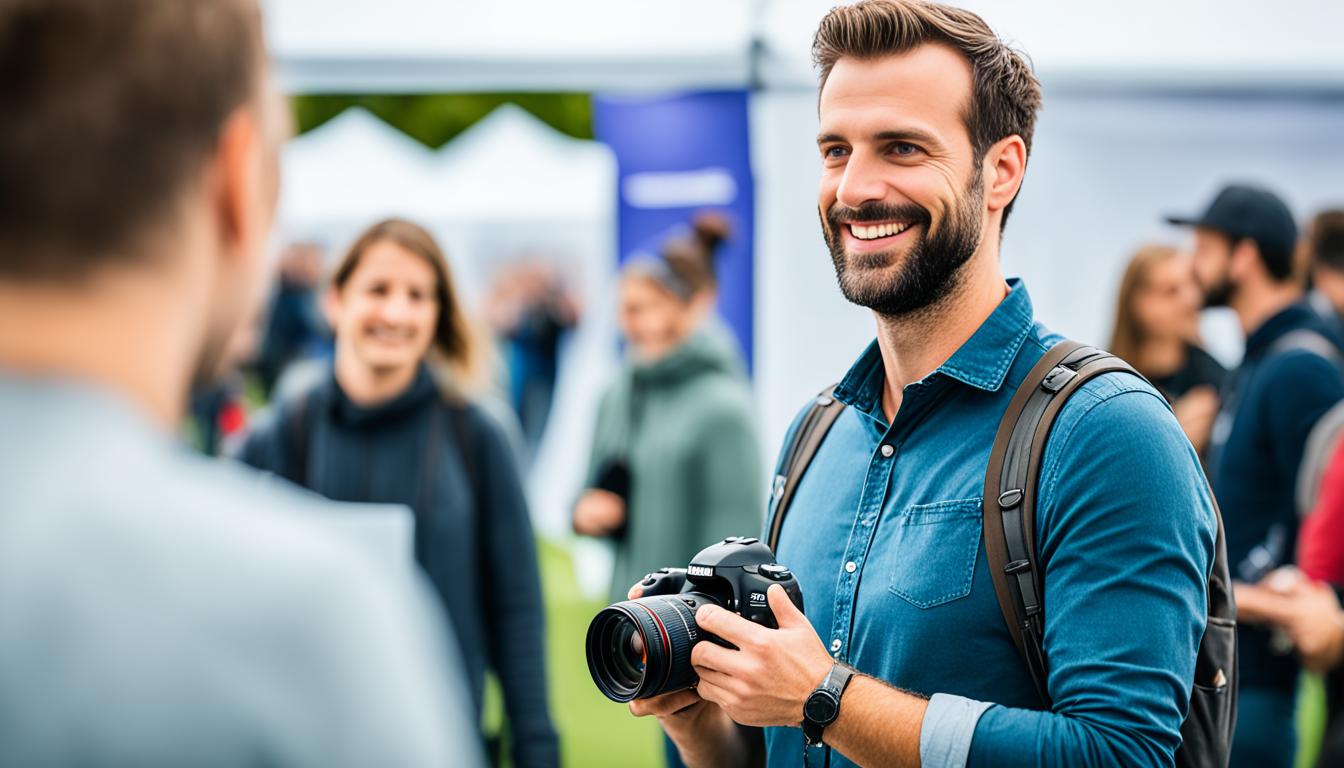When it comes to event photography, using flash can greatly enhance the quality of your photos. With the right techniques and equipment, you can capture the moment and create stunning images. In this article, we will share some expert tips on using flash photography at events to help you improve your skills and achieve perfect lighting in every shot.
Key Takeaways:
- Using flash photography can greatly enhance the quality of event photos.
- Understanding camera settings for indoor events is crucial for achieving perfect lighting.
- Investing in the right equipment, including external flashes and a flash diffuser, is essential for event flash photography.
- Mastering flash photography techniques, such as using TTL mode and experimenting with settings, can elevate your event photography skills.
- Continuously improving your skills and being creative will help you capture stunning images at any event.
Understanding Camera Settings for Indoor Event Photography
Each event venue presents its own unique lighting challenges, so it’s crucial to understand how to adjust your camera settings accordingly. By mastering camera settings for indoor event photography, you can effectively capture the perfect lighting and create stunning images. Here are some expert tips to help you get started.
Familiarize Yourself with Your Camera
Prior to the event, take the time to explore your camera’s capabilities and experiment with different settings. This will help you become familiar with its functionalities and understand how to optimize them for indoor event photography.
Consider the Lighting Conditions
The available light at the event venue plays a vital role in determining your camera settings. Pay attention to the ambient light and adjust your ISO, aperture, and shutter speed accordingly. For indoor events, you may need to use higher ISO settings and wider apertures to compensate for the low light conditions.
Take Venue Size into Account
The size of the venue can also impact your camera settings. In larger venues, you may need to adjust your settings to account for the increased distance between you and the subjects. Consider using longer focal length lenses or zoom lenses to capture subjects from a distance.
Optimize Flash Photography Settings
When using flash at indoor events, it’s essential to know how to adjust the flash settings on your camera. Experiment with the flash power, flash exposure compensation, and flash sync modes to achieve the desired lighting effect.
Create a Balanced Lighting Setup
In addition to understanding your camera settings, it’s important to set up the lighting properly for indoor event photography. Consider using off-camera flash or diffusers to soften and evenly distribute the light. This will help you avoid harsh shadows and create a more natural lighting effect.
Stay Prepared and Flexible
Lastly, always be prepared to adjust your camera settings on the go as the event unfolds. Lighting conditions can change rapidly, especially during indoor events, so staying agile and adaptable is key to capturing the perfect shot.
Incorporating these camera settings for indoor event photography into your workflow will enhance your ability to use the flash effectively and achieve the desired lighting. With practice and experimentation, you will build confidence in navigating various lighting challenges and capturing exceptional images at any indoor event.
| Camera Settings | Adjustment |
|---|---|
| ISO | Increase ISO for low-light conditions |
| Aperture | Use wider apertures for more light intake |
| Shutter Speed | Adjust shutter speed to capture motion and control exposure |
| Flash Power | Experiment with flash power to achieve desired lighting effect |
| Flash Exposure Compensation | Modify flash exposure compensation for balanced lighting |
| Flash Sync Mode | Select appropriate sync mode for flash photography |
Essential Equipment for Event Flash Photography
To achieve professional-quality event flash photography, you’ll need to have the right equipment. Here are some essential tools to enhance your skills and capture stunning images at any event:
- Camera: Start with a camera that can handle low-light situations and has excellent ISO management. Look for models with high ISO capabilities to minimize noise and ensure clear, well-exposed shots even in challenging lighting conditions.
- External Flash: Investing in at least one external flash is crucial for event photography. External flashes have more power and versatility compared to the built-in flash on your camera, allowing you to achieve better control over lighting. Consider getting a flash that supports high-speed sync (HSS) for freezing motion and capturing dynamic moments with crisp details.
- Off-Camera Flash Setup: Take your event flash photography to the next level with an off-camera flash setup. By positioning the flash away from your camera, you can achieve more creative lighting effects and eliminate harsh shadows. Use wireless triggers or sync cables to trigger the flash remotely.
- Lenses with Wide Apertures: Wide-aperture lenses, such as prime lenses with low f-numbers (e.g., f/1.8, f/2.8), allow more light to enter the camera, enabling you to shoot at faster shutter speeds and lower ISO settings. This combination is ideal for capturing sharp images in low-light situations.
- Tripod: Stability is crucial for event photography, especially when using slower shutter speeds or shooting in dimly lit environments. A sturdy tripod will help you keep your camera steady and prevent blurriness caused by camera shake.
- High-Speed Memory Cards: Events often involve capturing a significant number of photos in a short amount of time. Utilizing high-speed memory cards ensures that your camera can quickly save images and be ready for the next shot. Look for cards with fast read and write speeds for seamless performance.
- Extra Batteries: Running out of power during an event is every photographer’s nightmare. Always carry spare batteries to avoid missing out on important moments. Having multiple fully charged batteries ensures uninterrupted shooting throughout the event.
- Flash Diffuser: A flash diffuser attaches to your external flash and helps soften and spread out the light, creating more natural and pleasing lighting conditions. It helps reduce harsh shadows and eliminates the “deer in headlights” look, resulting in more flattering portraits.
Equipping yourself with the right event photography gear will give you the confidence and capability to capture stunning images in any lighting situation.

Flash Photography Techniques for Event Photography
Flash photography can be intimidating for some photographers, but with practice and the right techniques, you can master it. Here are some valuable tips to help you achieve stunning results:
- Start with TTL Mode: When you’re starting out, TTL (Through-The-Lens) mode can provide excellent results. It automatically calculates the flash power based on the camera’s metering system, giving you more flexibility to focus on capturing the moment. Experiment with different TTL settings to achieve the desired lighting effects.
- Transition to Manual Flash Settings: As you gain more experience, gradually transition to manual flash settings for full control over your lighting. Manual flash allows you to increase or decrease the power based on your subject and environment, resulting in more accurate and creative lighting effects. Take the time to learn how to adjust the flash power and test different settings to create the desired mood and atmosphere.
- Experiment with ISO, Aperture, and Shutter Speed: To achieve the desired lighting effects, don’t be afraid to experiment with different camera settings. Adjusting the ISO, aperture, and shutter speed can greatly impact the exposure and overall look of your photos. For low light photography, a higher ISO setting can help you capture more light, while using a wider aperture (lower f-stop value) allows for a shallower depth of field. Adjusting the shutter speed can control the ambient light in your shots.
- Capture Candid Moments: Events are filled with candid and spontaneous moments that can make for memorable photographs. When using flash at events, seize the opportunity to capture candid shots. The burst of light from the flash can illuminate the subjects beautifully, freezing their emotions and adding a dynamic element to your images. Be discreet and blend into the surroundings to capture authentic emotions and genuine moments.
- Get Creative with Compositions: Don’t be afraid to explore different compositions and angles when using flash at events. Use the flash as a tool to highlight specific subjects, create dramatic shadows, or add depth to your photos. Consider varying your distance from the subject, using different lenses, and experimenting with off-camera flash setups to achieve unique and captivating compositions.
Mastering flash photography techniques for event photography takes time and practice. Embrace the opportunity to experiment with different settings, be patient with yourself, and continuously refine your skills. By employing these techniques, you’ll be able to capture stunning images that truly capture the essence of any event.
Conclusion
Using flash photography at events is a game-changer when it comes to capturing the moment with perfect lighting. Throughout this article, we have explored various event photography tips, highlighted the importance of using flash, and provided insights into camera settings, essential equipment, and flash photography techniques.
By understanding your camera settings and experimenting with different techniques, you can achieve professional-quality event photos. Investing in the right equipment, such as external flashes, wide-aperture lenses, and flash diffusers, will further enhance your ability to capture stunning images. Remember to continuously improve your skills by practicing, being creative, and embracing candid shots to add a touch of spontaneity to your event photography.
In conclusion, our expert tips have equipped you with the knowledge and confidence to take your event photography to the next level. With the right techniques and equipment, you can confidently capture those magical moments at any event. So go ahead, get out there, and create beautiful memories with your flash photography skills!
FAQ
What is flash photography?
Flash photography is the use of artificial lighting, usually in the form of a flash unit or external flash, to illuminate a scene or subject in photography. It is commonly used in low-light or challenging lighting conditions to enhance the quality and clarity of the images.
Why should I use flash photography at events?
Using flash photography at events can greatly improve the lighting of your photos and help you capture the moment with more clarity and detail. It can also allow you to freeze motion, create dramatic effects, and add dimension to your images.
What camera settings should I use for indoor event photography?
When shooting indoors at events, it is important to adjust your camera settings accordingly. Start by setting your ISO to a higher value to compensate for low light. Use a wide aperture to let in more light and achieve a shallow depth of field. Adjust your shutter speed based on the motion of the subject or to minimize camera shake.
What equipment do I need for event flash photography?
To achieve professional-quality event flash photography, you will need a camera with good low-light capabilities, an external flash, lenses with wide apertures, a tripod for stability, high-speed memory cards, extra batteries, and a flash diffuser to soften and diffuse the light.
What flash photography techniques should I use for event photography?
Start by using TTL mode for more flexibility and gradually transition to manual flash settings for full control. Experiment with different ISO, aperture, and shutter speed settings to achieve the desired lighting effects. Embrace low-light situations and capture dramatic photos by illuminating faces with the flash. Be creative, take candid shots, and experiment with your compositions.
What Are Some Tips for Capturing the Moment in Event Photography?
Capturing the perfect shot in event photography for occasions requires careful planning and observation. Be mindful of lighting, angles, and candid moments. Get to know your surroundings and anticipate key moments. Engage with your subjects to capture genuine emotions and expressions. Patience and creativity are essential for successful event photography.




